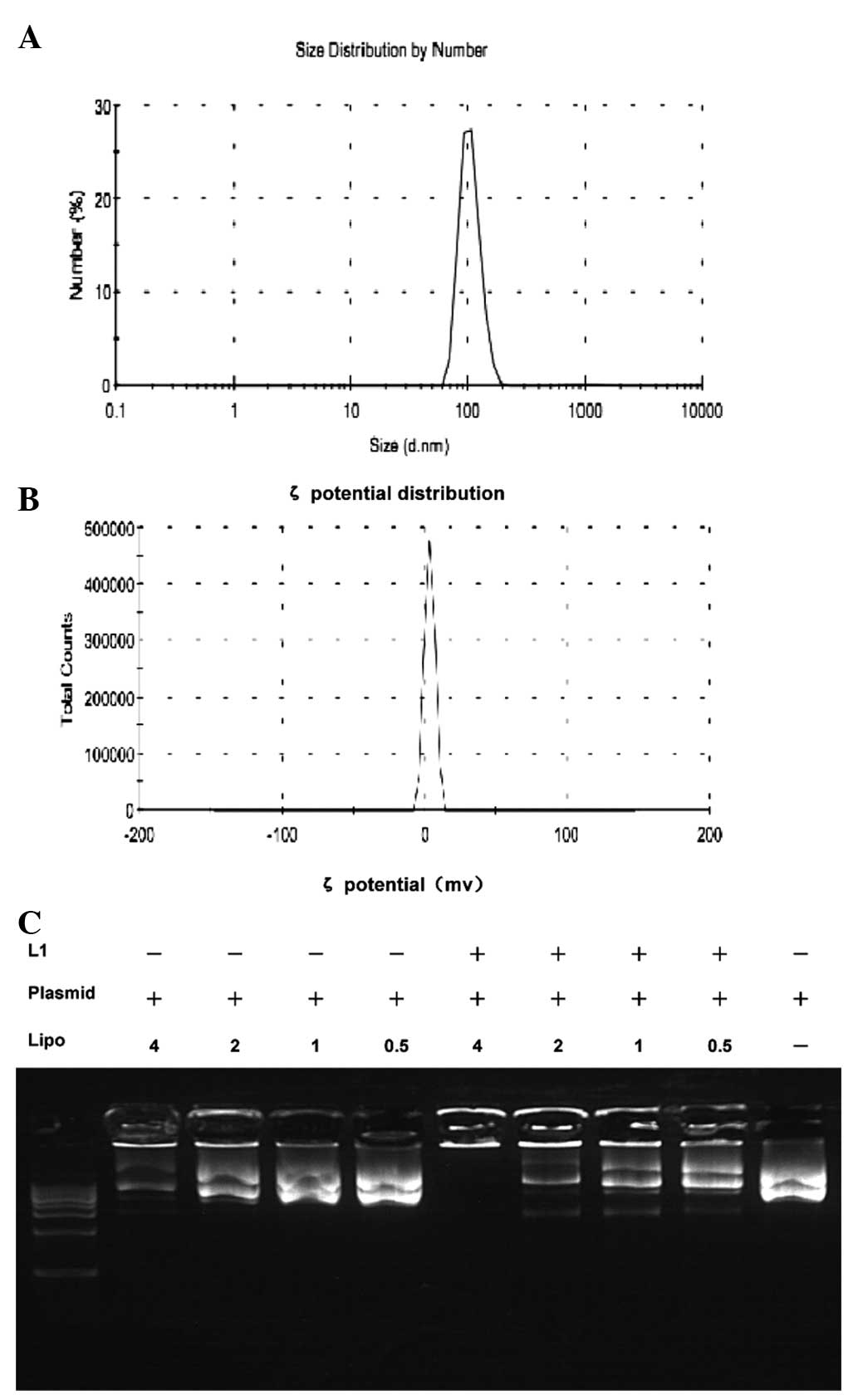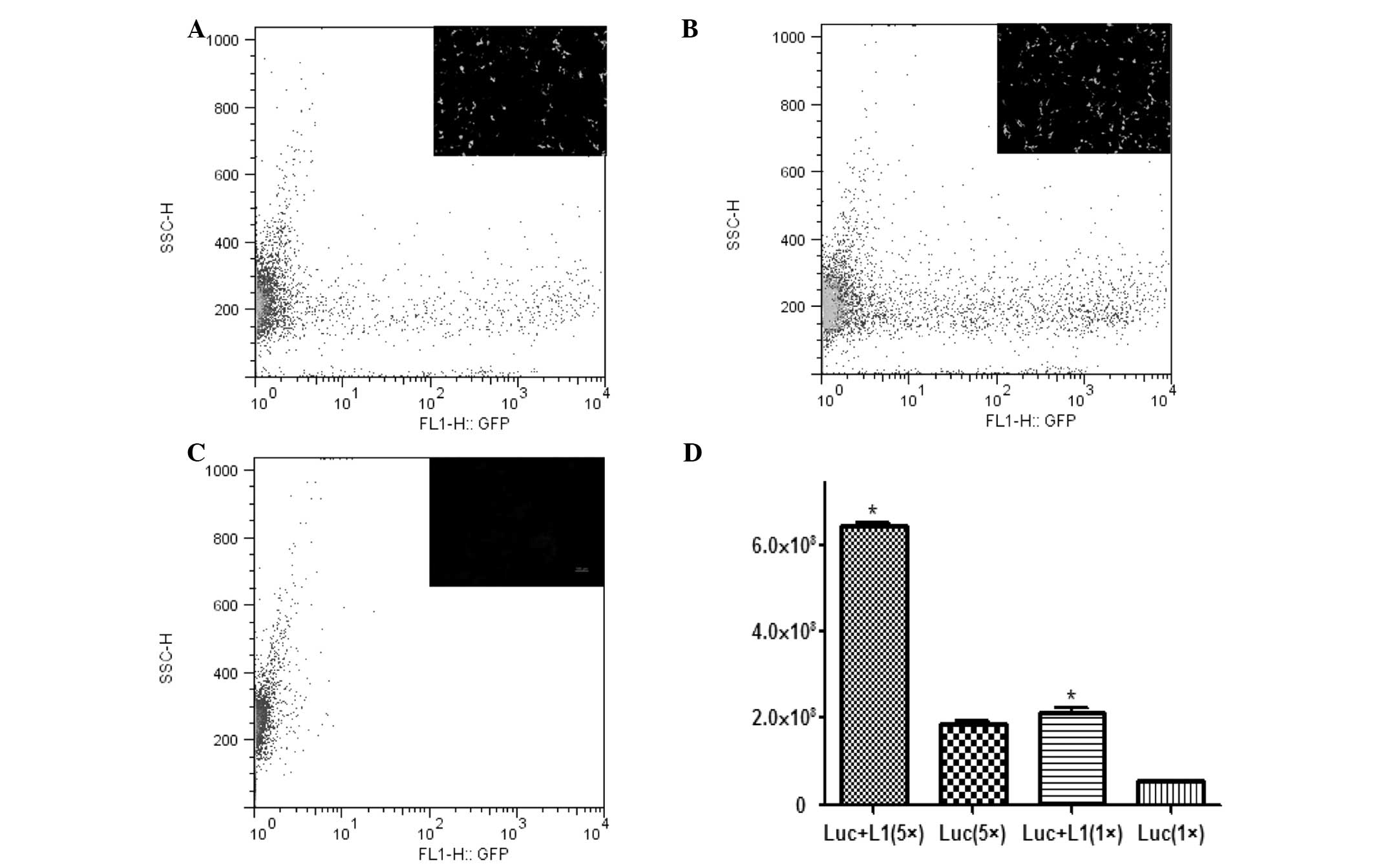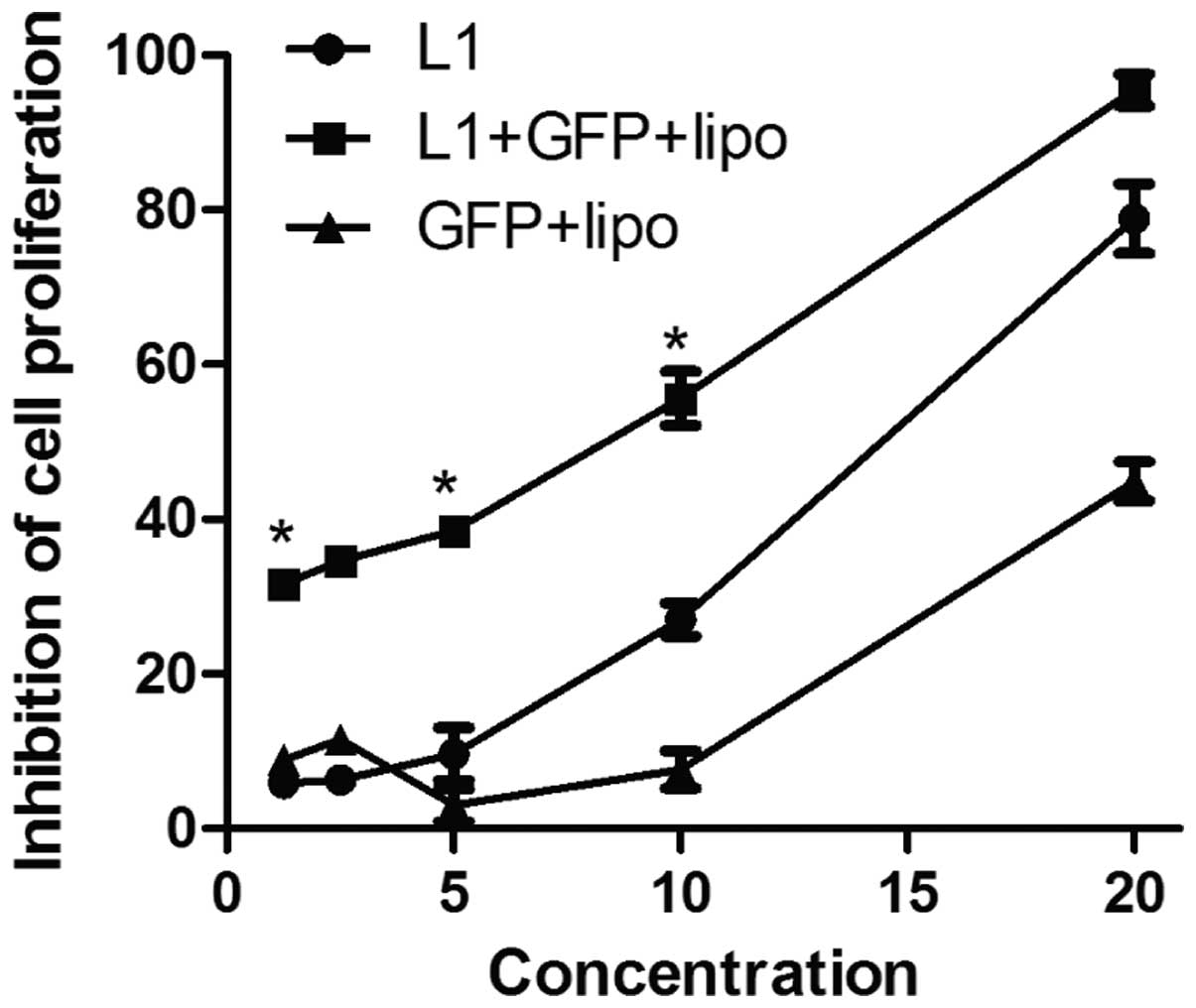Anticancer activity of stoppin based on a novel peptide delivery system
- Authors:
- Published online on: July 2, 2015 https://doi.org/10.3892/mmr.2015.4024
- Pages: 5437-5442
Metrics: Total
Views: 0 (Spandidos Publications: | PMC Statistics: )
Total PDF Downloads: 0 (Spandidos Publications: | PMC Statistics: )
Abstract
Stoppin (L1) is a newly identified anticancer peptide, which is a potent p53‑MDM2/MDMX inhibitor. Due to its limitation in cell delivery efficiency, a new peptide delivery system was developed based on a nucleic acid‑polypeptide‑liposome complex and its stability and effectiveness in vitro was investigated. The nucleic acid‑stoppin‑liposome complex was prepared and characterization of the complex was conducted. The stability of the complex was evaluated by enzyme digestion. Following transfection of the A549 cells with the complex, detection of green fluorescent protein (GFP) and luciferase activity was conducted to evaluate transfection efficiency. In addition, the anticancer activity of the complex was determined by 3‑(4,5‑dimethyl‑thiazolyl‑2)‑2,5 diphenyltetrazolium bromide assay and apoptosis was detected by flow cytometry. The results indicated that the particle size of the complex was 102±10 nm and the encapsulation rate was ~100% when the ratio of liposome, L1 and plasmid was: 4 µl:1 µg:2 µg. The enzyme digestion experiment demonstrated that the complex was resistant to pancreatic and DNA enzyme degradation, indicating that the complex had biological stability. Cell transfection demonstrated that it had a mutual promotion effect on delivery, which could be confirmed by GFP fluorescence and luciferase assay. The cell‑killing efficiency of this novel delivery system was three times higher than with stoppin alone at a low concentration. In conclusion, this novel stoppin peptide delivery system was stable. The nucleic acid‑peptide‑liposome complex can protect the internal component from the degradation of enzymes, promote entry of the peptide into the cells and enhance the anti‑tumor activity of stoppin. Therefore, it is a promising approach for peptide delivery, which can be characterized and visualized using plasmids with GFP or luciferase.













